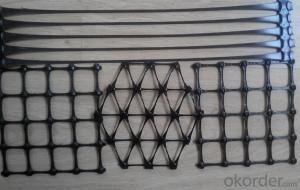Geotextile Net: A Versatile Material for Engineering and Environmental Applications
The flexible quality of geotextiles has always fascinated me as an enthusiast of innovative materials and their application. These engineered textiles have been mainstreamed in various projects, ranging from civil engineering to environmental conservation. In this article, I will try to explore the world of geotextiles, by discussing reasons why they are used and what impacts they bring to us.
What is a Geotextile Net?
A textile that is permeable named geotextile net otherwise called geonet or a geogrid is fabricated from polypropylene’s, polyester’s, or polyethylene’s polymers so as to be used with soil rock earth etc., to perform various functions. It is due to their exclusive construction that these nets are very robust, durable and resistant towards environmental effects.
Applications of Geotextile Net
Erosion Control: One of the primary uses of geotextiles nets is erosion control. They help stabilize slopes thereby preventing soil erosion through rain water or wind blowing them away. The net structure captures soil particles enabling vegetation growth through it which further secures the area.
Reinforcement: Soil structures including retaining walls and embankments are reinforced using geo-textile nets. They give tensile strength to the soil thus preventing deformation and failure.
Separation: During construction jobs, geo-textile nets are employed for separating different layers of materials so that loads get distributed evenly not leading up mixing incompatible substances.
4.Filtration : What they do as filters is allowing water through when retaining soil particles in order to prevent clogging drainages systems..
5.Land Reclamation: Geotextile nets play a key role in land reclamation projects by helping create stable platforms for new developments on unstable/unsuitable land before them.
The Benefits of Using Geotextile Nets
Cost-Effective: When compared with other reinforcement materials, geotextile nets are relatively cheap and hence are preferred for large scale projects.
Easy to Install: They can easily be transported and installed even in remote regions because they are lightweight and flexible.
Environmentally Friendly: Made from polymers, geotextile nets can be recycled and have a lesser environmental impact than traditional materials.
Longevity: Geotextile nets could last for several years without their efficiency diminishing as they do not corrode or degrade due to UV rays.
Versatility: This characteristic of geotextile nets makes them popular among engineers as well as environmentalists since they can be applied in different places.
Personal Experience with Geotextile Net
I have once seen the installation of a geotextile net during a local construction project. The workers effortlessly handled the material and the immediate effects that it had on stabilizing the region were amazing. It just went to show how effective geotextiles can be when applied in actual situations.
Challenges and Solutions
Despite their numerous benefits, geotextile nets also face various challenges. One of the main concerns is installation errors that may lead to inefficiency of the net use. Proper training plus adherence to instructions during installation will help mitigate this risk.
The next challenge involves selecting the right kind of geo-textile net for a particular application. To make an informed decision, one should involve experts’ opinion as well as conduct extensive research on this subject matter.
The Geotextile Net of the Future
Over time, our world keeps changing and undergoing new trials. It is no surprise therefore that there will be an increasing need for innovative and sustainable materials like geotextile nets. Further research will lead to even more advanced and specialized geotextile nets in the future.
Summary
Geotextiles have been found to be of great use in various industries. Their flexibility, low cost, and environmental advantages have made them popular among engineers and environmentalists alike. As we move ahead, it is important to explore and exploit the potentialities of geotextiles in order to create a more sustainable world. Let us embrace the usage of this kind of netting as well as its possibilities which are amazing.







